Ahmad Basheer Hassanat
Visual Words for Automatic Lip-Reading
Sep 17, 2014



Abstract:Lip reading is used to understand or interpret speech without hearing it, a technique especially mastered by people with hearing difficulties. The ability to lip read enables a person with a hearing impairment to communicate with others and to engage in social activities, which otherwise would be difficult. Recent advances in the fields of computer vision, pattern recognition, and signal processing has led to a growing interest in automating this challenging task of lip reading. Indeed, automating the human ability to lip read, a process referred to as visual speech recognition, could open the door for other novel applications. This thesis investigates various issues faced by an automated lip-reading system and proposes a novel "visual words" based approach to automatic lip reading. The proposed approach includes a novel automatic face localisation scheme and a lip localisation method.
Visual Passwords Using Automatic Lip Reading
Sep 02, 2014



Abstract:This paper presents a visual passwords system to increase security. The system depends mainly on recognizing the speaker using the visual speech signal alone. The proposed scheme works in two stages: setting the visual password stage and the verification stage. At the setting stage the visual passwords system request the user to utter a selected password, a video recording of the user face is captured, and processed by a special words-based VSR system which extracts a sequence of feature vectors. In the verification stage, the same procedure is executed, the features will be sent to be compared with the stored visual password. The proposed scheme has been evaluated using a video database of 20 different speakers (10 females and 10 males), and 15 more males in another video database with different experiment sets. The evaluation has proved the system feasibility, with average error rate in the range of 7.63% to 20.51% at the worst tested scenario, and therefore, has potential to be a practical approach with the support of other conventional authentication methods such as the use of usernames and passwords.
Dimensionality Invariant Similarity Measure
Sep 02, 2014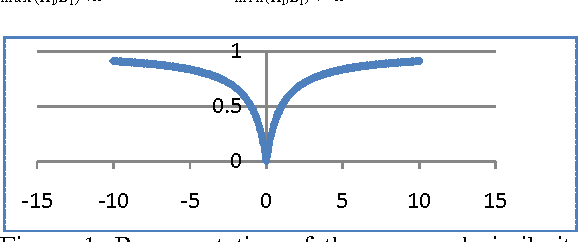
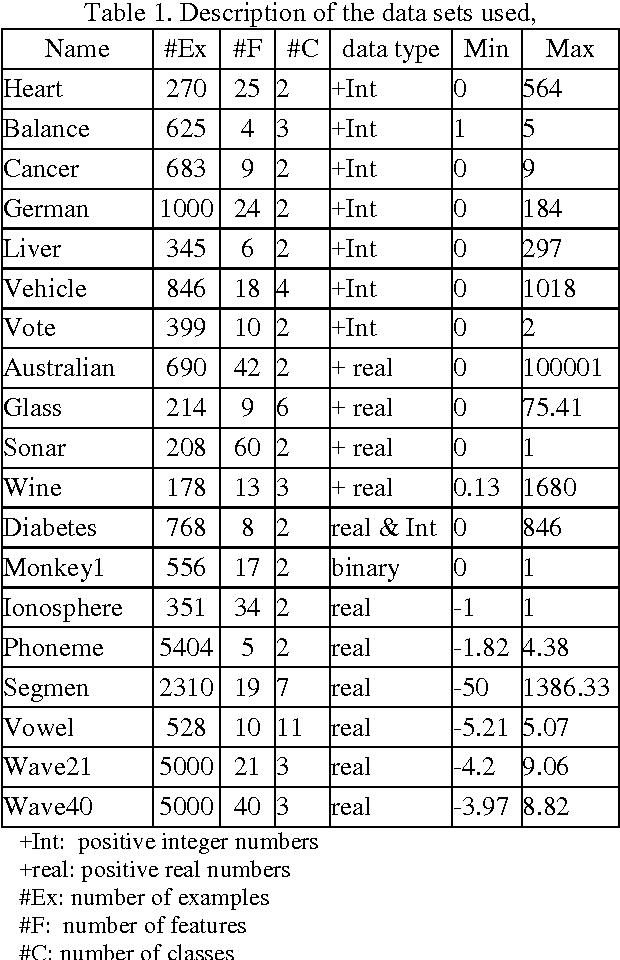
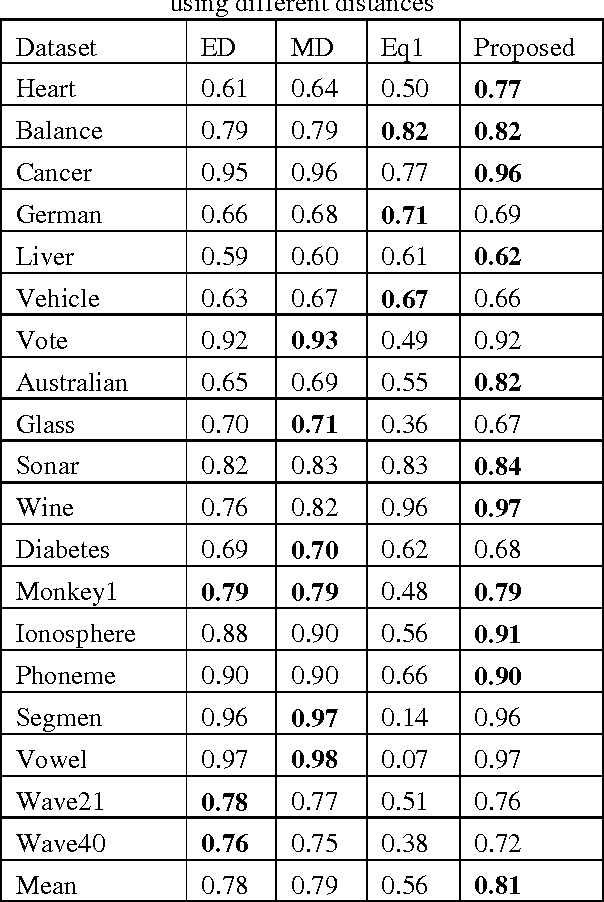
Abstract:This paper presents a new similarity measure to be used for general tasks including supervised learning, which is represented by the K-nearest neighbor classifier (KNN). The proposed similarity measure is invariant to large differences in some dimensions in the feature space. The proposed metric is proved mathematically to be a metric. To test its viability for different applications, the KNN used the proposed metric for classifying test examples chosen from a number of real datasets. Compared to some other well known metrics, the experimental results show that the proposed metric is a promising distance measure for the KNN classifier with strong potential for a wide range of applications.
* (ISSN: 1545-1003). http://www.jofamericanscience.org
Solving the Problem of the K Parameter in the KNN Classifier Using an Ensemble Learning Approach
Sep 02, 2014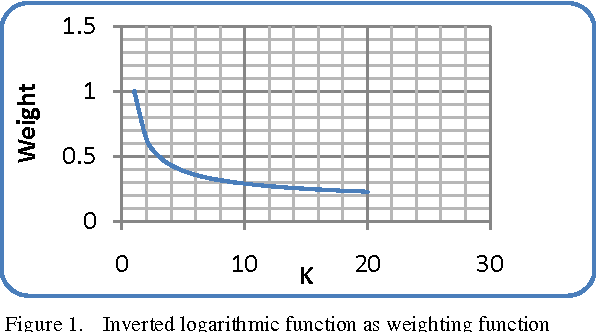
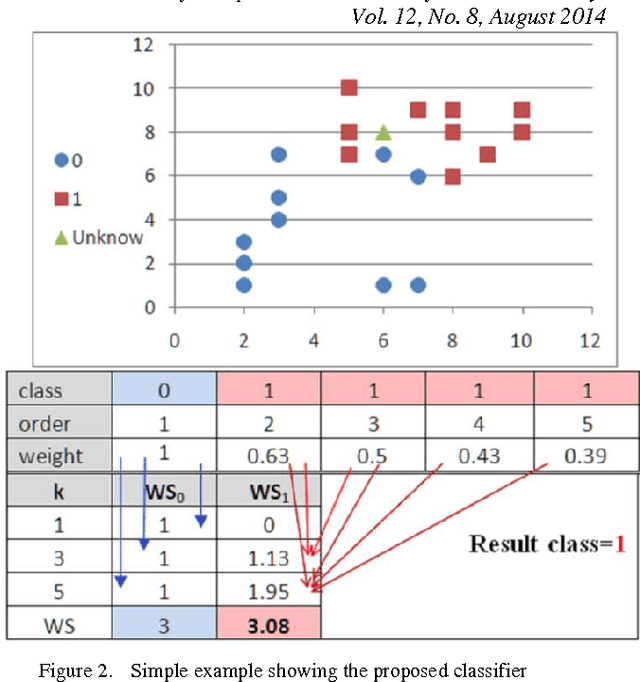
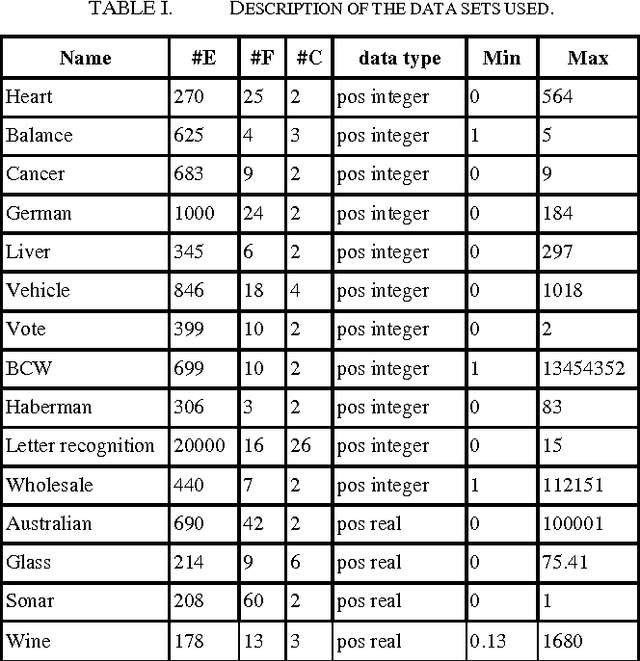
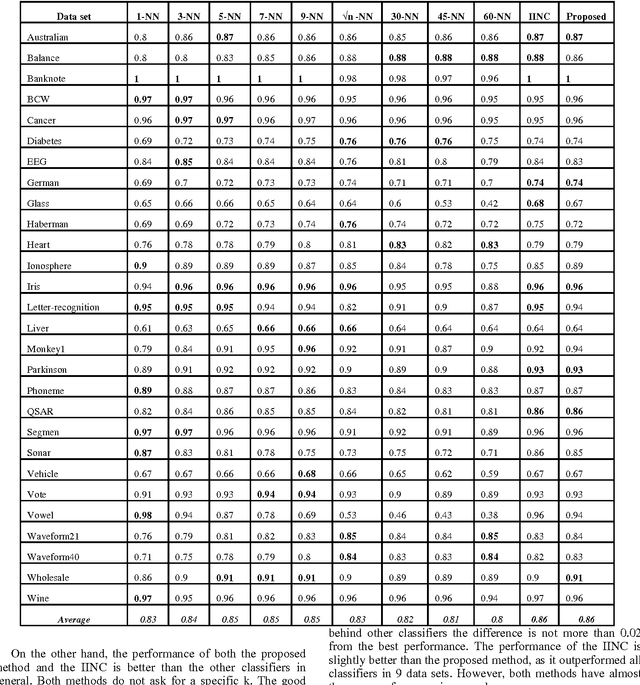
Abstract:This paper presents a new solution for choosing the K parameter in the k-nearest neighbor (KNN) algorithm, the solution depending on the idea of ensemble learning, in which a weak KNN classifier is used each time with a different K, starting from one to the square root of the size of the training set. The results of the weak classifiers are combined using the weighted sum rule. The proposed solution was tested and compared to other solutions using a group of experiments in real life problems. The experimental results show that the proposed classifier outperforms the traditional KNN classifier that uses a different number of neighbors, is competitive with other classifiers, and is a promising classifier with strong potential for a wide range of applications.
 Add to Chrome
Add to Chrome Add to Firefox
Add to Firefox Add to Edge
Add to Edge